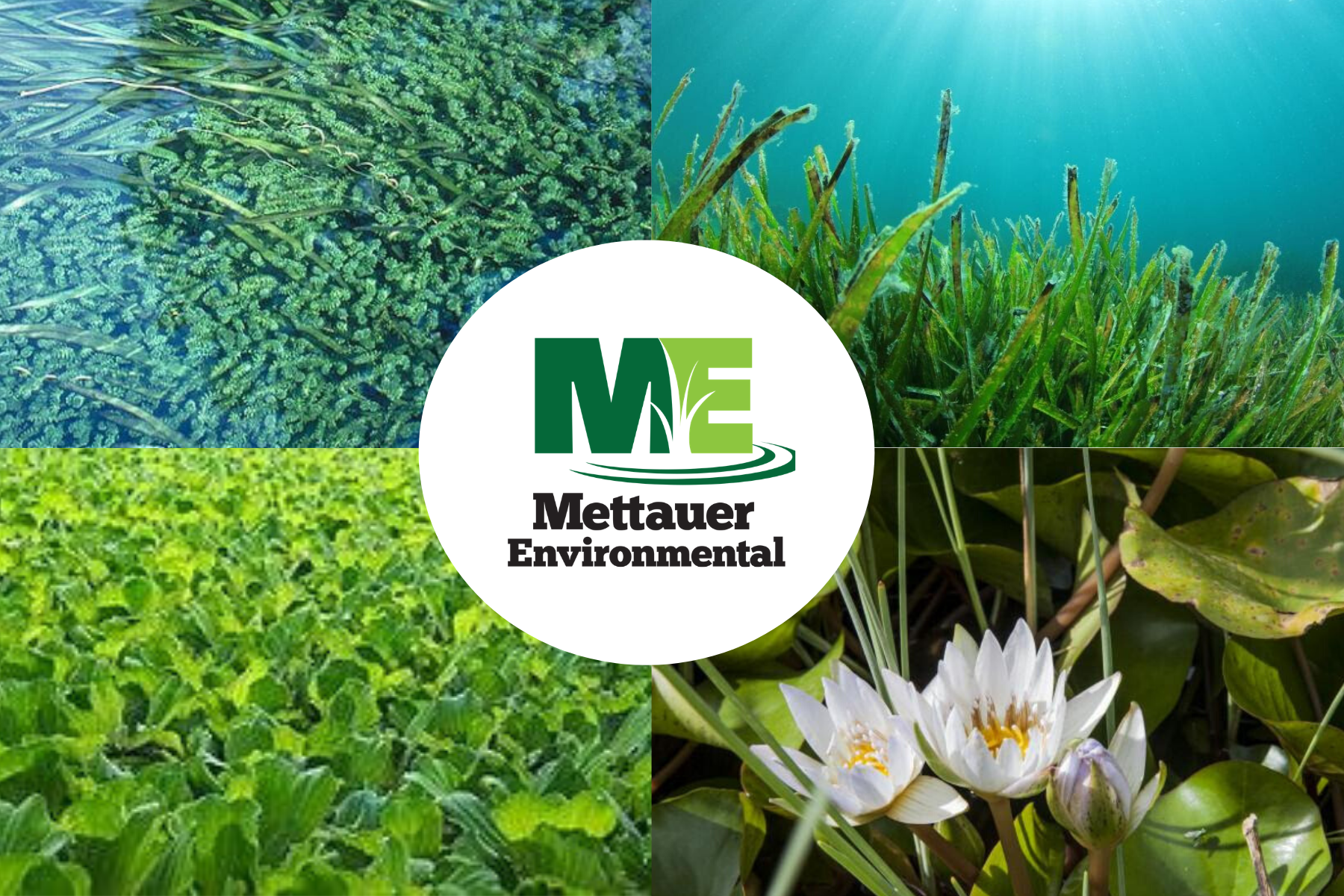Florida is home to many native and nonnative species of aquatic vegetation, left uncontrolled, they can cause many issues for your lake or pond. Uncontrolled aquatic weeds can lower dissolved oxygen and water flow, harm fish and other wildlife, interfere with fishing, and disrupt boat traffic.
With the warm weather in Florida and high nutrients in most lakes and ponds, uncontrolled aquatic weeds can become a problem quicker than you think.
At Mettauer Environmental, we specialize in aquatic weed management and use environmentally friendly and responsible methods to control aquatic weeds. Traditional management practices involve harsh chemicals and heavy metals to remove the vegetation; however, such practices can harm water quality and can eliminate beneficial vegetation.
Beneficial aquatic plants fill many duties in the lake ecosystem, such as wildlife food and shelter, absorption of undesirable nutrients, and soil stabilization. Before attempting to control or remove aquatic vegetation on your own, we suggest calling the experts at Mettauer Environmental. We can help identify the good and bad aquatic vegetation and manage it appropriately.
Floating Lake and Pond Vegetation
Floating vegetation includes plants that may or may not have roots and are typically found in nutrient-rich waters. Without roots, these plants need to receive nutrients straight from the water. Their leaves and plant tissue will float on top of the water, and they can spread rapidly over the surface of a lake or pond. If not properly maintained, floating vegetation can cause problems; such as, limiting water flow and increasing the risk of flooding, reducing the ability to trap and treat pollutants, which increases the chance of pollutants entering into public waterways. Floating vegetation also limits access for swimming, fishing, and boating.
Native Nuisance Floating Vegetation Found in Southwest Florida
Giant Duckweed – Giant Duckweed is a native floating plant in Florida. It’s frequently seen growing on the surface of rivers, ponds, and lakes throughout Florida. Giant Duckweed has two to three rounded leaves, and it is very small.
Water Lily – The water lily is a common native flowering floating plant in Florida. Water lily leaves are nearly circular, with a notch in the center. They will produce white, aromatic flowers.
Non-Native Floating Aquatic Species in Southwest Florida
Hyacinth – The Hyacinth is a non-native invasive aquatic plant that expands and crowds the surfaces of lakes, ponds, and streams. Originally from South Africa, these plants disturb nutrient balance by blocking sunlight and increasing the rate of sedimentation.
Water Lettuce – Water lettuce is a floating plant that will resemble an open head of lettuce. The leaves of this plant are very thick and will form large masses on top of the surface of the water.
Submersed Aquatic Vegetation
Submersed vegetation will grow and usually stay under the water in almost all Florida water bodies. Submersed vegetation has many benefits for lakes and ponds such as:
– Improving the water quality and clarity
– Providing habitats for fish and other wildlife
– Providing a food source for fish and other wildlife
Native Nuisance Submerged Vegetation in Southwest Florida
Tape Grass – Tape Grass is a large, submerged aquatic grass that is native to Florida. It can be found in many lakes and ponds across the state. It is referred to as eelgrass because of its dark green, long, ribbon-like leaves that have rounded tips. This grass will grow very long and can sometimes be seen popping out on the water surface. Tape grass is a favorite hiding spot for most fish.
Florida Bladderwort – Florida Bladderworts are native to Florida and are free-floating submersed plants that have no roots. Bladderworts will have bright color flowers, usually yellow. The Florida Bladderwort is one of Florida’s only carnivorous plants and it will often digest mosquitoes and mosquito eggs.
Sago Pondweed – Sago pondweed is grass-like and it has multiple stems that will often form large masses at the water surface. Under the water, the Sago Pondweed will look like grass in a meadow.
Invasive Submerged Vegetation in SW Florida
Hydrilla – Native to Asia, Hydrilla was introduced to Florida in 1959, and has caused many problems in lakes and ponds. The submerged plant, which can grow to the surface, can form very dense mats and completely take over the water body. In Florida waters, this plant requires constant management to keep it contained.
Hygrophila – Hygrophila is a submersed invasive plant that looks like a collection of thin, long leaves that are brown to green in color. This plant is rooted in the waterbed and can extend to the surface where it overshadows other plants and takes over the lake or pond.
Problems of Excessive Aquatic Vegetation
Plants growing in water can quickly get out of hand, especially in Southwest Florida’s climate. Additionally, non-native plant species can grow aggressively and can rapidly take over large areas of a pond or lake. An excessive amount of floating or submerged vegetation can reduce oxygen levels in the water, which can lead to fish kills, and all together can be aesthetically unpleasing.
If you are having issues with aquatic plant life or would like more information on aquatic weed management, call Mettauer Environmental today at (239) 728-1814. We will provide a free evaluation of your lake or pond and help identify your aquatic vegetation. Whatever your water management needs may be, Mettauer Environmental is here to assist with eco-friendly and affordable solutions.



